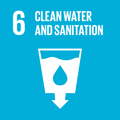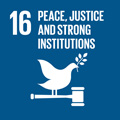- Docente: Alessandro Gargini
- Credits: 6
- SSD: GEO/08
- Language: Italian
- Moduli: Alessandro Gargini (Modulo 1) Enrico Dinelli (Modulo 2)
- Teaching Mode: In-person learning (entirely or partially) (Modulo 1); In-person learning (entirely or partially) (Modulo 2)
- Campus: Bologna
- Corso: Second cycle degree programme (LM) in Geology and Territory (cod. 9073)
Learning outcomes
At the end of the course the student acquires knowledge about basic principles and potential applications of: geochemical dynamics of soil and groundwater contamination by metals, metalloids (either of natural or anthropic origin) and man-made organic compounds (hydrocarbons, chlorinated solvents, pesticides, emerging contaminants); contaminant fate and transport processes from a contamination source to receptors along pathway in groundwater and air; geological, hyrogeological and geochemical characterization of a contaminated site; sampling strategies and monitoring approach in contaminated sites. One credit of field activity will integrate the lessons with practical activity on real cases of contaminated sites due to mining or industrial activity.
Course contents
The course is divided in 2 Modules
Module I – Geochemistry of contaminated sites.
Sampling procedures on water, soil, sediment, air. Sampling strategy. Sample conditioning in relation to the sampled medium. Main instrumentations for geochemical characterization, with particular emphasis on inorganic components. Geochimical maps, threshold values and natural background levels. Migration and partition of inorganic contaminants in the hydrosphere: origin, toxicity and mobility.
Module II – Contaminant hydrogeology and risk assessment.
Physico-chemical properties and mobility of organic contaminants in air, soil and groundwater. Non Aqueous Phase Liquids. Transport of contaminants in the unsaturated zone and in groundwater (advection, diffusion, dispersion, retardation, degradation). Legislation on contaminated sites. Well-head and spring-head protection zones. Characterization, risk assessment and remediation of contaminated sites. Forensic hydrogeology and identification of the polluter.
Readings/Bibliography
Module 1 –Geochemistry of contaminated sites
Calace N., Fratini M., Guerra M., Pascarella F., Zampetti F., 2006. Manuale per le indagini ambientali nei siti contaminati. APAT, Manuali e linee guida 43/2006
Manuale per la movimentazione di sedimenti marini, 2009. APAT-ICRAM
Linee guida per la determinazione dei valori di fondo per i suoli e per le acque sotterranee. ISPRA
Manuali e linee guida 174/2018
Module 2 –Contaminant Hydrogeology and Risk Assessment
Lessons (slides) of the teacher uploaded on IOL the day before each lesson.
The teaching material provided by the teacher, along with the notes taken by the student, is to be considered adequate for the preparation of the exam
To integrate:
C.W.Fetter-T.Boving-D.Kreamer "Contaminant Hydrogeology" Waveland Press
Teaching methods
Oral presentations, generally organized as a general overview and case studies as examples. Field trips are planned at sites of interest to complement classroom teaching
For module 2 exercitations in classroom by PC will be performed for risk assessment through freeware codes. Activity on the field concerning hydrogeological monitoring and characterization in a contaminated site
As concerns the teaching methods of this course unit, all students must attend Module 1, 2 [https://www.unibo.it/en/services-and-opportunities/health-and-assistance/health-and-safety/online-course-on-health-and-safety-in-study-and-internship-areas] online, while Module 3 on health and safety is to be attended in class. Information about Module 3 attendance schedule is available on the website of your degree programme”
Assessment methods
The exam is based upon a multiple-choice/open answer written test.
The student can refuse the votation only once
The votation is expressed in 30/30 quote and is the average of the votation taken in the 2 Modules.
Teaching tools
Videoprojector, PC, blackboard, demonstration of the use of instruments (in the lab and on the field). PC exercise to perform risk assessment
Office hours
See the website of Alessandro Gargini
See the website of Enrico Dinelli
SDGs




This teaching activity contributes to the achievement of the Sustainable Development Goals of the UN 2030 Agenda.
